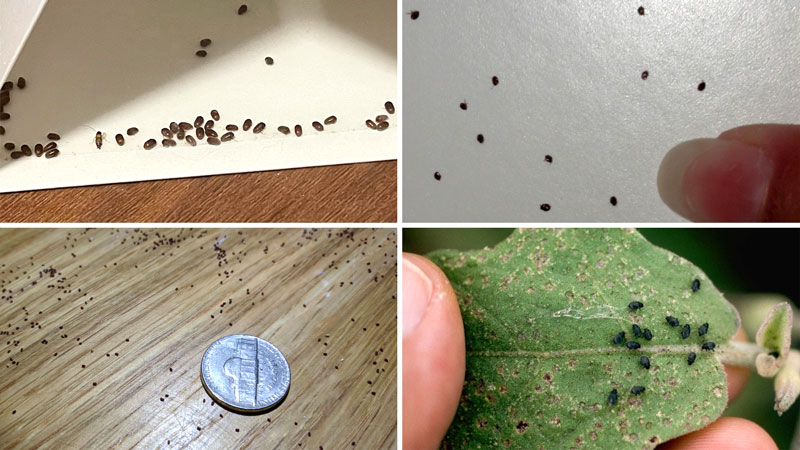Tiny Black Bugs Look Like Poppy Seeds

In the intricate tapestry of nature, one might occasionally encounter tiny black bugs, resembling poppy seeds, scurrying across surfaces or congregating in unexpected places. These minuscule creatures, often no larger than a speck, can be found in various environments, from kitchens and gardens to bathrooms and beyond. Despite their diminutive size, these insects evoke curiosity and sometimes concern among those who chance upon them.
Identification is the first step in understanding these enigmatic creatures. Typically, these bugs are classified as different species of beetles or mites, depending on their specific characteristics and behaviors. Their small, dark, and almost seed-like appearance often causes confusion and can make them easily overlooked or mistaken for debris.
What sets these tiny black bugs apart is their adaptability and resilience. They exhibit a remarkable ability to thrive in diverse habitats, from damp and humid environments to dry and arid conditions. These insects are opportunistic, feeding on a wide array of organic matter, including decaying plant material, fungi, and sometimes even other small insects or mites.
One of the common varieties resembling poppy seeds is the flea beetle. These tiny beetles possess enlarged hind legs, allowing them to leap when disturbed, similar to fleas. Despite their name, flea beetles do not bite humans or pets. Instead, they feast on various plants, causing tiny holes in leaves, which can affect the overall health of the vegetation.
Another probable candidate among these minute creatures is the spider mite. Often found on indoor plants or in gardens, spider mites are not insects but rather arachnids, closely related to spiders and ticks. They’re notorious for the fine webbing they create and their rapid reproduction, causing damage to plants by sucking sap from leaves, resulting in discoloration and reduced plant vigor.
While the presence of these tiny black bugs may raise concern, particularly in households or areas where food is stored, it’s essential to note that many of them are harmless and serve as part of the natural ecosystem. However, certain species might require attention, especially if they begin to affect plant health or cause nuisance indoors.
Managing and preventing these bugs often involves maintaining cleanliness and minimizing favorable conditions for their proliferation. Regularly cleaning and decluttering spaces, proper storage of food items, and adequate ventilation to reduce humidity can significantly deter their presence.
When faced with a pest issue, it’s prudent to seek guidance from pest control professionals or entomologists for accurate identification and appropriate control measures. Resorting to chemical pesticides should be a last resort and done cautiously, considering their potential impact on the environment and other beneficial organisms.
Conclusion
The tiny black bugs look like poppy seeds present an intriguing aspect of the natural world. Understanding their habits, identifying their species, and adopting preventive measures can assist in coexisting harmoniously with these creatures or managing their impact effectively. Embracing curiosity and learning about these small yet fascinating inhabitants enriches our appreciation for the diverse life forms that share our environment.





